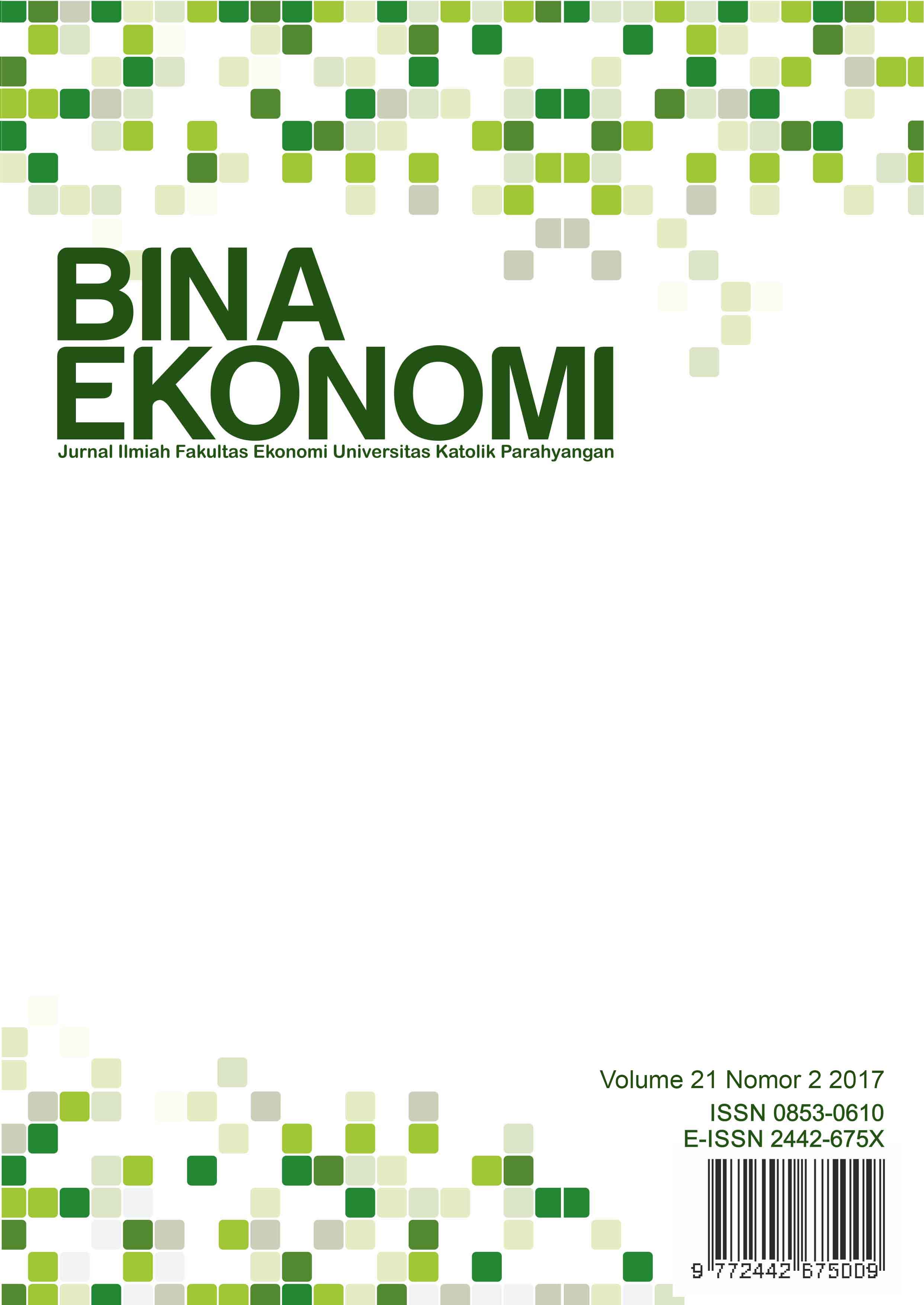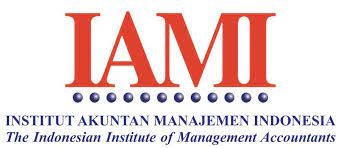PENGARUH PROFITABILITAS, STRUKTUR MODAL, PROSPEK PERTUMBUHAN, DAN VALUASI PERUSAHAAN TERHADAP IMBALAN TIDAK NORMAL PADA PERUSAHAAN PUBLIK
DOI:
https://doi.org/10.26593/be.v21i2.2899.133-148Abstract
The purpose of this research is to identify the effect of profitability, capital structure, growth prospect, and company valuation on abnormal return (market-adjusted model) of public companies around the announcement of stock split in Indonesia Stock Exchange in the period of 2010-2013. In this research, Return on Equity (ROE) is used as a proxy of profitability, Debt to Equity Ratio (DER) as a proxy of capital structure, Price to Earnings Ratio (PER) as a proxy of growth prospect, and Price to Book Value (PBV) as a proxy of company valuation. The results of this research indicate that profitability, capital structure, growth prospect, and company valuation simultaneously have no significant effect on abnormal return. Partially, profitability has positive and not significant effect on abnormal return, while capital structure, growth prospect, and company valuation have negative and not significant effect on abnormal return.
Keywords: Profitability, Capital Structure, Growth Prospect, Company Valuation, Stock Split, Reverse Split, and Abnormal Return
References
Cooper, D., & Schindler, P. (2006). Business research method (9th ed.). New York: McGraw-Hill.
Fama, E. F. (1970). Efficient capital markets: a review of theory and empirical work. The Journal of Finance, 25(2), 383-417.
Fama, E. F., Fisher, L., Jensen, M. C., & Roll, R. (1969). The adjustment of stock prices to new information. International Economic Review, 10(1), 1-21.
Fransson, A. (2005). The effects of reverse stock splits- an empirical approach to the signaling and trading range hypotheses on Swedish stocks subject to reverse split between 1995 and 2004. Jonkoping International Business School, 8(4), 1-18.
Ghozali, I. (2013). Aplikasi analisis multivariate dengan program SPSS. Semarang: Badan Penerbit Universitas Diponegoro.
Gottwald, R. (2012). The use of the P/E ratio to stock valuation. GRANT Journal, 21-24.
Grinblatt, M., Masulis, R. W., & Titman, S. (1984). The valuation effects of stock splits and stock dividends. Journal of Financial Economics (JFE), 13(4), 1-35.
Gumanti, T. A., & Utami, E. S. (2002). Bentuk pasar efisien dan pengujiannya. Jurnal Akuntansi dan Keuangan, 4(1), 54-68.
Hartono, J. (2008). Teori portofolio dan analisis investasi. Yogyakarta: BPFE.
Johnson, K. B. (1966). Stock splits and price change. The Journal of Finance, 21(4), 675-686.
Kuncoro, M. (2003). Metode Riset untuk Bisnis dan Ekonomi. Jakarta: Erlangga.
Nugroho, H. C. (2014). Pengaruh ukuran perusahaan, struktur modal, profitabilitas, prospek pertumbuhan, dan krisis global terhadap initial return perusahaan non keuangan yang melakukan IPO di bursa efek Indonesia tahun 2008-2012. Thesis, Program Magister Akuntansi Universitas Kristen Maranatha - Bandung.
Rotblut, C. (2010). The importance of book value. American Association of Individual Investors.
Rusliati, E., & Farida, E. N. (2010). Pemecahan saham terhadap likuiditas dan return saham. Jurnal Bisnis dan Akuntansi, 12(3), 161-174.
Savitri, M., & Martani, D. (2008). The analysis impact of stock split and reverse stock split to stock return and volume case study in Jakarta Stock Exchange. Retrieved from http://staff.ui.ac.id/system/files/users/martani/publication/savitrimmartanid.pdf
Spence, M. (1973). Job market signaling. Quarterly Journal of Economics, 87(3), 355-379.
Sugiyono. (2013). Metode penelitian bisnis. Bandung: Alfabeta.
Sunyoto, D. (2013). Metode penelitian akuntansi. Bandung: Refika Aditama.













